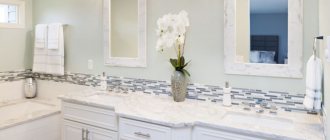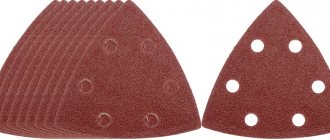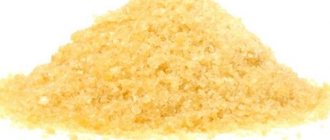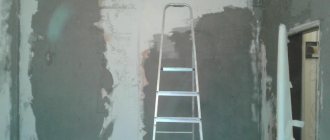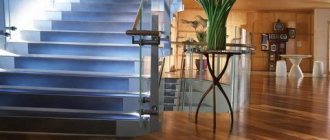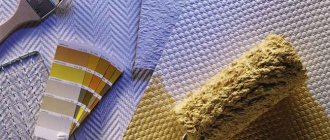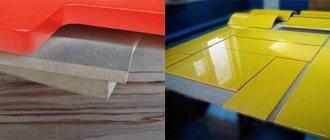Painting is a necessary measure that can significantly increase the service life and preserve the beautiful appearance of the wood. In addition, paint can prevent the appearance of mold and mildew, which will prevent putrefactive processes that can completely destroy the wooden structures of Euro-windows, reports the WINDOWS MEDIA portal.
First of all, the surface of the frame must be clean and dry, so the moisture content of the wood before painting should be less than 20 percent. Also, the room must be thoroughly cleaned so that dust does not settle on the freshly painted surface of the window frame, which can negate all the work of the home craftsman.
Preparing to paint wooden windows
Before painting wooden windows, do not forget to protect the glass unit with special masking tape, seal all cracks, remove protruding window fittings and apply a new layer of sealant. The old layer of paint is removed by sanding the wood, paying special attention to the joints and gluing areas (more paint usually accumulates in these places), and then clean the surface from dust. This should be done delicately and carefully using a stiff brush.
It is not recommended to remove paint with a knife, since such exposure may leave dents and chips on the surface of the wood. After the layer of old paint is removed, it is necessary to check the wood for damage - wormholes, rotten formations, and so on.
Also, before starting painting work, it is necessary to eliminate common defects in the form of broken locking mechanisms and loose fastening parts of wooden windows.
Removing old paint
To paint a previously painted wooden window, first of all, you should remove the old paint from the window frame using a special device - a scraper. Clean all surfaces of the frame with a spatula or sandpaper. Also, in hard-to-reach places, you should carefully remove the old layer of paint with a triangular spatula. If the frame gets stuck in the window frame, you should trim and clean the edges. Then the frame must be wiped with white spirit and washed with water.
Packing double-glazed windows with masking tape
To prevent the glass unit from getting dirty when painting a wooden window, it is recommended to wrap it with masking tape. To do this, masking tape is glued to the edge of the window glass, leaving a gap of 2 millimeters between the frame and the self-adhesive tape. Thanks to this technique, the gap between the glass unit and the frame will be covered with paint, which will protect it in the future from water draining from the glass unit.
Paints and varnishes for interior and exterior window decoration
Alkyd paints are usually used indoors. They have an elastic structure and give the windows an aesthetic appearance. The flexible structure of the coating is achieved thanks to oil inclusions.
For outdoor work, more durable coatings are required, such as acrylic and nitro paint. Such paints and varnishes dry very quickly, and they do not have a strong odor, and after drying, a durable film is formed on the window frame. However, paints are not suitable for window sills. You can figure out how to paint wooden windows only by taking into account the characteristics of different materials.
Puttying wooden windows
After removing a layer of old paint from a wooden window, you may encounter defects in the surface of the frame. To eliminate them, the frame must be cleaned of dust and dirt. Next, you should fill all the cracks and dimples using a special putty for wood. Allow the putty to dry for 1–2 hours. After this, level the surface with sandpaper and remove sanding dust with a damp cloth.
If there are deep defects and depressions, the puttying process should be repeated, allowing each layer to dry. The permissible thickness of each layer of putty should not exceed 2 millimeters.
Painting technology
Despite the apparent simplicity of painting windows, in order to prevent your frames from peeling off in just a few months, you must adhere to a certain technology.
Preparation
First you need to make a visual inspection of the window. Put all closing mechanisms in order, ensure a tight fit of the spillways, and secure loose structural elements.
All cracked and peeling paint must be removed. If this is not done, then in such places, when repainting, the old coating will begin to swell and burst.
Cover the glass with masking tape around the perimeter of the frames, this way you will protect them from paint and you won’t have to carry out the tedious procedure of cleaning them; If you don’t have tape on hand, apply a soapy solution to the glass and wait until it dries.
Removing old layers
Frames that have been painted several times must be completely cleaned of their previous coatings. To do this, you can use special paint removal compounds (they are sold in hardware stores). After application, you can scrape off the old layers using a spatula.
Or use a hair dryer: it will heat up the paint, after which it can be removed with the same spatula.
Remove the paint using a blowtorch, but be very careful not to burn yourself.
Grinding
It is necessary to carefully cover all the cracks with wood putty. After this, you can treat the surface of the frames with coarse and fine abrasive sandpaper.
If you skip this stage of work, you may end up with unsightly, rough surfaces after the paint dries: the fibers located on the frames will rise.
Padding
If, as a result of the preparatory work, all the paint was removed from the frames, or if you decided to paint wooden windows for the first time, then after sanding the entire structure must be treated with a primer mixture. Old paint remover reviews? This will make the paint last longer.
Preparing the Paint
The coloring composition must be diluted, since a thick layer of the composition cannot be applied evenly, there will be sagging, unevenness and, in the end, it will quickly crack. However, as a result of dilution, the paint should not be similar in consistency to water.
Experiment, pour a little paint from a jar into another container and dilute it to the required state; what solvent to do this with, ask the seller.
Primer
In order for the paint to adhere well to the wooden frame, priming is performed using a brush, since it has the ability to rub the primer well into all the surface irregularities of the wooden profile. For priming, it is recommended to use a thixotropic (jelly-like) primer paint, which has the property of creating a perfectly flat surface. After the primer has dried (after 24 hours), you can begin painting the window.
Before painting, the outer part of a wooden window must be treated with an antiseptic impregnation for wood.
Option 2. Painting a plastic window
Preparatory work
The question of whether it is possible to paint plastic windows is still considered controversial. In principle, PVC products are not intended for re-painting, but they, despite all the properties of the material, lose their attractiveness over time.
The profile turns yellow, its surface loses its shine, stains, stains, scratches appear on it... in general, “something needs to be done”!
From my point of view, the question of whether it is possible to paint PVC windows can be answered positively with some reservations:
- firstly, as a result we still won’t get a perfectly smooth surface, so painting is quite a compromise solution;
- secondly, the quality of the finish directly depends on the materials used and the quality of surface preparation.
This composition is quite suitable for updating a plastic window.
I will focus on preparing the window for painting in as much detail as possible:
- At the first stage, we remove the sashes from their hinges and remove all removable elements from the window - linings, handles, additional fittings, etc.
- We clean the frame and sash profile from dirt by wiping it with a damp sponge.
- Carefully degrease plastic surfaces that will be painted. When degreasing, we pay close attention to the choice of solvent: it is very important that it does not react with PVC.
We carefully degrease the profile
- We wipe the degreased structure dry, and then treat the surfaces with fine sandpaper. We need to make the plastic matte without scratching it.
- After sanding, wipe all surfaces dry again, simultaneously removing plastic dust. I would degrease again - this step definitely won’t be superfluous.
- Immediately before painting, we protect the glass unit, fittings and seals from pigment by sealing them with masking tape or covering them with plastic film.
If you use a spray gun, then you need to close not only the double-glazed window, but in general everything except the surfaces to be painted.
Application of primer and paint composition
When restoring the appearance of plastic windows, I am guided by the following scheme: prime with a brush, paint with a spray. This approach allows you to achieve maximum quality of the coating, while primer for plastic can be applied with a brush, saving time and effort on fussing with a spray gun.
Applying paint indoors
We work like this:
- First, apply one or two layers of primer to all surfaces. Between approaches we take a pause necessary for the soil to polymerize.
- After the primer has dried, we move on to painting. We apply the pigment using a spray gun, spraying the first layer to form the base coat.
- When the first layer of paint has dried, repeat the procedure. At the same time, we need to form a perfectly homogeneous surface, while simultaneously correcting all the shortcomings of the first layer.
- The number of layers is determined by the hiding power of the paint. Sometimes a light base appears under the dark pigment, so before painting plastic windows brown, it is worth checking how the paint will behave.
Spraying outside
We protect painted structures from wind, precipitation and mechanical influences during the entire period of paint polymerization. You should be especially careful about dust and microscopic hairs: they stick to fresh paint and can greatly spoil the appearance of the window.
Applying powder pigment to an aluminum profile
Aluminum windows are painted using approximately the same scheme, only the paint, of course, is taken accordingly. Ideally, aluminum pigments are used to decorate an aluminum profile, but, alas, they can only be applied in special chambers...
Features of the process of painting wooden windows
Experts say that it will be much easier and safer to work if the wooden window is removed from its hinges and placed on a wide, flat surface. If there is not enough space in the house, then the Euro-window can be painted by first placing it on a staircase or scaffold, that is, driving two nails into the support (a “hundredth” is enough) at a height of about 1 meter. After this, it is enough to install the edge of the euro-window on the driven nails, and the structure will hold well.
If the sliding window was not removed from the opening in advance, then during the drying of the paint it is necessary to repeat the cycles of raising / lowering the window sash several times. Otherwise, when the paint that gets into the grooves dries, the recesses and protrusions necessary for the movement of the sash may stick together. As a result, the wooden window will be difficult to raise and lower.
The paint must dry for at least six hours. During this time, it forms maximum adhesion to the surface of the wood, thanks to which it can protect it for a long time from the destructive effects during operation. Before the paint dries completely, remove the masking tape from the glass unit.
Painting plastic windows
The classic color of PVC structures is white, however, plastic windows can also be improved and painted in a different shade depending on needs. Often such a need arises during a major overhaul, when high-quality profiles do not have technical flaws and do not require replacement, but from an aesthetic point of view they do not fit into the new design. Painting plastic windows has its own subtleties and difficulties. Before deciding to take this step, carefully study the issue and weigh all the pros and cons.
Painting wooden euro windows
You should start painting wooden Euro-windows from the outside of the window frame with a small brush (no more than 4 cm wide), carefully painting hard-to-reach places. The paint is applied along the wooden fibers with broad strokes, the corners are painted perpendicular to the surface with pointed strokes of the brush. Next, they begin painting the lower and upper horizontal bars, and then the vertical bars of the frame. Having fully opened the window sash, the hinges and window frame are painted. If you have a double frame, you should paint the inside first, let it dry, and then paint the outside of the window frame. Window slopes are covered with one layer of paint.
Next we start painting the frame itself. It is worth painting the window frame, starting with small parts. It is very necessary to paint the joints of the boards very carefully, since the cuts are the most vulnerable internal parts of a wooden window structure. The frame and ends are painted after the window frame is completely dry. When the painted wooden window dries, apply a second coat of paint. Painting the wooden window sill is the last thing to start.
When the paint has completely dried, replace the removed and painted fittings. If the sockets for the screws securing the hinges become loose, you need to plan out the plugs from a piece of wood and lubricate them with glue (PVA, epoxy, carpentry), then hammer them into the sockets and secure them with screws.
Basic rules for using paints
Painting tool
There are three options for applying paint - brush, roller and spray gun. When painting bindings and frames, a roller is not very convenient, so you have to choose between a spray gun and a brush. As a rule, the manufacturer indicates the application method on the paint packaging, since the spraying method is not suitable for some compositions. If both tools can be used, consider the following factors when choosing:
- The spray gun allows you to reduce paint consumption, reduce application time and make the coating more uniform. At the same time, when spraying paint, it is necessary to completely cover glass and other surfaces not intended for painting. After completing the work, the tool must be thoroughly washed, and to do this it must be disassembled and each part cleaned separately;
Spray gun
- With a brush, the paint is applied more carefully; adjacent surfaces can only be covered along the edges with masking tape. Cleaning a brush after finishing work is also easier than a spray gun. But in general, painting takes longer, the composition consumption increases, and more physical effort is required.
Paint brushes
Prices for pneumatic airbrushes, spray guns, texture guns
Pneumatic airbrushes, spray guns, texture guns
Ambient conditions
In order for the paint to adhere firmly and evenly to the surface of the frame, it must be applied at a temperature of +5 to +30 degrees. This condition is mandatory for almost all types of paints, with the exception of special heat-resistant compositions. But the most optimal temperature is considered to be between 18-23 degrees above zero.
Air humidity also matters. As a rule, painting is done in dry weather, with a relative humidity of 50-60%. For water-dispersion paints, this figure can increase to 80%, but no more. In addition, the air humidity should remain this way all the time while the surface is drying. The higher its value, the longer the paint will take to dry, and the higher the possibility of various defects appearing.
It is undesirable for direct sunlight to fall on the surface during painting. If it is not possible to shade the windows with something from the sun, you need to paint on a cloudy day or in the late afternoon, when the surface will heat up less. Well, of course, you can’t start painting in windy weather, otherwise everything will be covered with dust and small particles of debris.
Pay attention to weather conditions
Number and thickness of layers
If you just need to refresh the window, and the paint color matches the color of the previous coating, one coat is enough. Especially if the paint has a high covering ability. If you need to repaint it a different color, you will need at least 2 layers, otherwise the base will show through. 2-3 coats are necessary for untreated new wood or material in need of extensive restoration.
You cannot apply paint in a thick layer in the hope of achieving a deep color in one go. This provokes the formation of drips, sagging and other defects that clearly appear after drying. In addition, such a coating takes longer to dry, and its strength leaves much to be desired. Therefore, the paint is applied in a very thin layer and rubbed well into the base.
Remember that you should not apply a thick layer of paint
Painting a wooden window yourself is easy
To be fair, it should be noted that painting wooden euro-windows does not require strictly professional tools and skills. If desired, every home craftsman will be able to paint frames and window sills with high quality and fairly quickly, if he follows the above rules. Of course, you don’t have to waste your time learning the basics of painting wooden windows, but contact a window company and solve this problem with the help of specialists. It should be remembered that restoring wooden euro-windows with your own hands will certainly cost less, but there is also a risk of ruining a window that is not the cheapest to date.
How to choose paint?
Choosing paint for wooden windows
Considering that the window is an integral part of the apartment, which protects the room from atmospheric influences, the outside frame must easily cope with external factors, tolerate excessive heat or cold, not be afraid of high levels of humidity, etc.
Next, we will talk about which paint for window frames is best suited, and what points you need to pay closer attention to when purchasing it.
The paint must provide:
- resistance to high humidity and does not rot from the outside;
- wood's resistance to shrinkage and swelling;
- sufficient air exchange in the apartment.
A comparison table of the most popular paints for wooden windows is given below.
Related article: Calculation of floor boards: number of linear and square meters
| Type of paint | Paint characteristics |
| Water-based acrylic paint, odorless | It is highly resistant to moisture, can be used both outside and indoors, and is also perfect for further painting of gratings; has a vapor-permeable, breathable structure and a rich color palette; available in price and application; does not have a pungent odor. |
| Silicone resin paint | The paint is odorless and very similar to acrylic analogues; elastic; has a thick consistency; forms a glossy film; differs in dirt-repellent features. |
| Silicate water-soluble paint | Penetrates deeply into the wood structure; has no pungent odor; resistant to moisture and natural disasters; has a high level of adhesion. Fiberglass has antiseptic properties. |
| Polyurethane paint | Dries quickly; wear-resistant; frost-resistant; non-toxic; without smell; does not fade under sunlight. |
| Water-dispersion paint | Eco-friendly, quick-drying composition; does not fade or fade under sunlight; frost-resistant; amenable to tinting; odorless, can be used even in children's rooms |
| stain | Odorless; allows you to preserve the texture of the wood; unpretentious; easy to apply and dries quickly; does not form stains; has different color. |
Here are some practical tips from experienced finishers that will make your life easier:
- For DIY painting of a wooden frame, it is better to use oil-based alkyd paint. This is a more durable and elastic material, which has excellent decorative features and does not have a persistent odor. Purchasing such paint for the frame will save financial costs on painting window grilles, because this material can also be used for metal.
- “Repairing” the frame should be done in this way: for exterior work you should choose acrylic paint, and for interior work - alkyd. Using different paint compositions outside and inside the apartment, you can preserve the texture of the wood, and also paint window grilles in the future.
- You can also use a universal composition - atmospheric glossy enamel. This paint is equally good for both outdoor work on a wooden frame and for indoor work, because it does not have a strong, lingering odor.
Please note that the color of the frame depends on where it is installed:
- If the windows face the sunny side, choose a paint that is as light as possible. This helps to reflect the sun's rays from the surface of the wood, which is why it will not dry out quickly.
- If your windows are always in the shade, the outside can be painted with darker coloring compounds, but here it all depends on your wishes.
I would also like to mention such a process as painting plastic windows.
Related article: Natural stone bathroom sink
We are all accustomed to the fact that PVC windows only come in white, but this is absolutely not true. The coloring of PVC windows can be completely different, but if you once installed white frames, and after the renovation they do not fit into your improved apartment design, you should not even think about replacing them (unless, of course, you are completely satisfied with their quality). The PVC frame can be painted, but be careful, because not all paints and varnishes are equally good for this. If there is a great need for painting, think carefully about the whole process and acquire special materials and tools.

